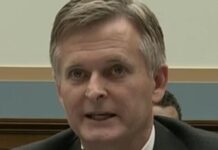For all the misery Covid-19 has wrought, the shelter-in-place orders imposed in the name of public health have yielded a few benefits, at least for driving. American motorists are putting half as many miles on their odometers as they usually do this time of year, according to Arity, a data analytics company. One result is reduced air pollution. Another is fewer crashes, saving lives and money. In California alone, those savings amount to some $40 million each day, well over $1 billion since the state went into lockdown mode last month.
That figure—presented in a new study by researchers at the University of California, Davis—is only surprising if you don’t consider the economic ripples of a crash. Counting medical expenses and productivity losses stemming from injuries and deaths, car crashes cost the American economy more than $75 billion in 2017. Throw in property damage, emergency responders, insurance costs, congestion, and the inevitable court cases, and it’s far more. In 2010, the most recent year for which the grand total is available, crashes cost the US $242 billion. California accounted for $20 billion of that sum.
Yes, even that pile of money is but a molehill in the shadow of the mountain of economic devastation from the novel coronavirus, which has pushed 26 million Americans out of work and eaten through the $2 trillion Cares Act in a few weeks. But California’s $40 million a day saving is worth considering for at least two reasons.
First, it illuminates the often ignored price of relying so heavily on the personal car. About 86 percent of American commuters drive themselves to and from work, and in doing so live with the small but real risk of a crash that could kill, injure, or inconvenience them. By passenger-mile, moving by bus or train is one-tenth as deadly, or less, according to the National Safety Council.
Second, the savings stem from shelter-in-place orders, a novel government stratagem to control a pandemic. “Understanding how a policy is working is important to do as quickly as possible so you can enhance the positive impacts and try to reduce the negative impacts,” says Fraser Shilling, who co-directs the UC Davis Road Ecology Center and wrote the report. “What’s the impact of the thing you made up on the fly?”
Shilling’s study covers California’s freeways for a period of just over three weeks, beginning March 22, a few days after the statewide shelter-in-place order took effect. Compared with the same period in 2019, traffic on those highways dropped by as much as 55 percent. Average vehicle speeds rose by about 4 mph, and crashes fell to about 500 a day, from 1,000. Two hundred thirty-seven people were killed or injured, down from 448 in the same period last year. Those decreases track with data Shilling pulled from four Sacramento-area hospitals, which saw a combined 38 percent drop in injuries to motorists and motorcyclists, and a 46 percent drop in injuries to pedestrians and cyclists.
Arity’s national data looks similar. Based on info from 23 million drivers, it reports a more than 50 percent drop in vehicle miles traveled. The biggest drops, over 60 percent, occurred in New York, New Jersey, and Michigan. More rural states saw smaller changes; driving dropped by less than 45 percent in Wyoming, Idaho, Utah, Arkansas, and Kentucky.
To calculate the savings from California’s newly safer roads, Shilling used formulas from the Federal Highway Administration, which account for things like property damage, lost time at work, insurance claims, and the monetary value of a human life. The result is a rough estimate, because it’s not clear how the current economic upheaval might change the math’s underlying assumptions. Congestion, for example, doesn’t cost as much now as usual, since fewer people are driving to work. But the costs are likely higher in California than they are nationally, thanks to the Golden State’s high cost of living. “There’s definitely wiggle room,” Shilling says. He thinks the actual savings are more significant. “This is a minimum.”









